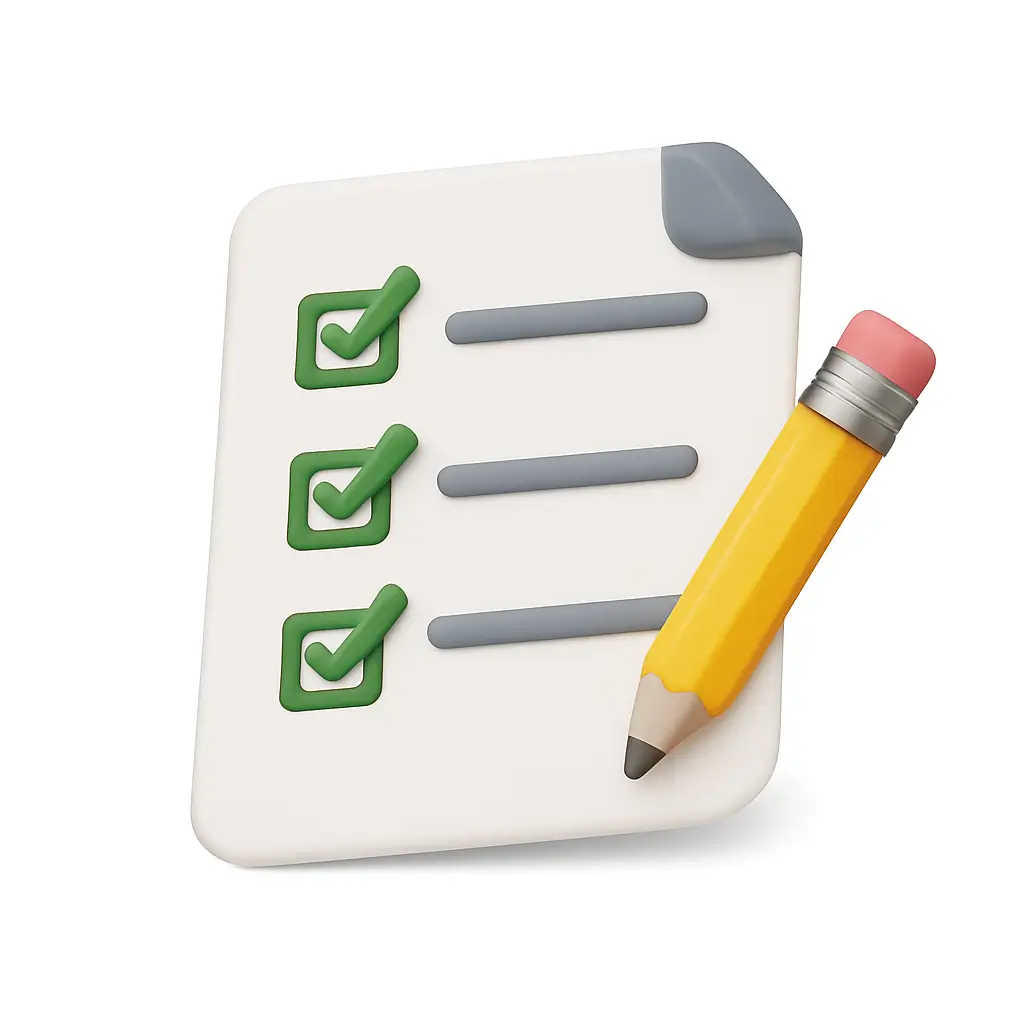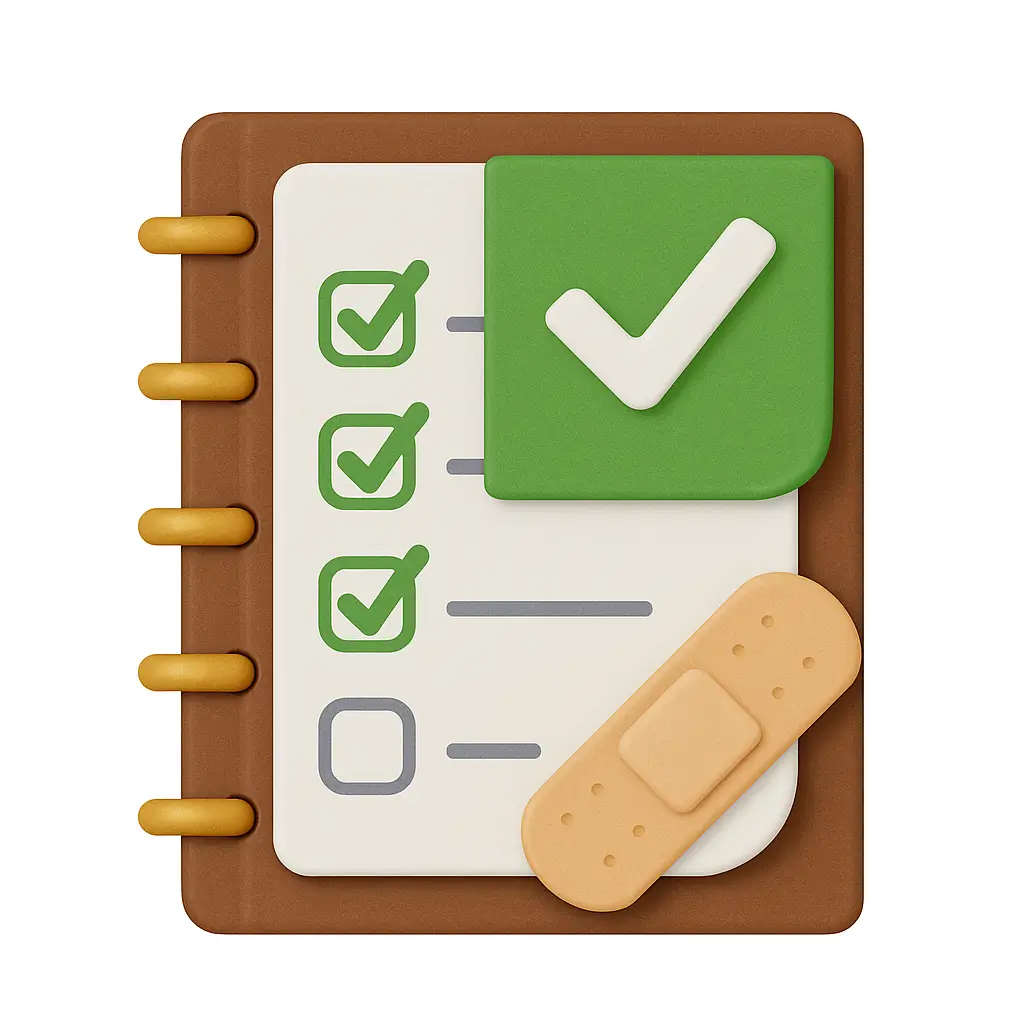Evening Shutdown Ritual
End your workday in a way that sets up tomorrow’s success
July 24, 2025 · 4 min read

🌙 The day that won’t end
Maya closes her laptop at 6:10—but her brain keeps working. Loose ends tug. “Did I send that file? What’s first tomorrow?” By 9 PM, she’s answered two more emails, opened three tabs, and never really shut down.
Sound familiar?
An Evening Shutdown Ritual draws a clean line under your workday so you can rest—and return stronger tomorrow.
What it is
A 10–15 minute, repeatable checklist that: (1) captures open loops, (2) clarifies tomorrow’s priorities, and (3) signals your brain that work is done for today.
Why it works
- Capturing loose ends reduces mental clutter and rumination
- A brief plan for unfinished tasks makes it easier to let go
- A consistent shutdown cue helps your brain switch contexts from work to rest
Less noise tonight. More momentum tomorrow.
The evening shutdown
1) Capture (3 minutes)
Open a note titled “Inbox → Tomorrow.” Brain‑dump tasks, worries, and reminders. Short phrases only. Nothing gets solved here—just captured.
2) Close (2–3 minutes)
Scan today’s calendar, DMs, and email. Archive or snooze what can wait. Reply only to items that truly unblock others.
3) Decide Top 3 (3 minutes)
Write tomorrow’s three outcomes, in order. Make #1 small enough that you can start within five minutes.
4) Setup (2 minutes)
Prepare the first move for tomorrow: open the doc, paste the outline, queue the dataset, lay out your notebook. Reduce friction to near zero.
5) Signal “done” (1 minute)
Update status: “Offline—back at 9:00.” Close work apps. Put your laptop to sleep. Take one slow breath in through the nose, longer exhale through the mouth. Say out loud: “Shutdown complete.”
Scripts that help
- To yourself: “If it’s not on my Top 3, it waits.”
- To teammates: “Signing off—ping me here and I’ll reply in the morning.”
- Calendar note: “Evening Shutdown 5:45–6:00—please avoid booking.”
Checklist template
- [ ] Capture: notes, tasks, reminders into one place
- [ ] Close: archive/snooze, quick unblock replies
- [ ] Top 3: write outcomes for tomorrow (with a tiny first move)
- [ ] Setup: stage files, tabs, tools
- [ ] Signal: status update, apps closed, physical cue
Seven‑day ramp
Day 1–2: Run Capture + Top 3 only (5 minutes)
Day 3–4: Add Close + Setup
Day 5–6: Add a clear “done” cue (status + breath + phrase)
Day 7: Review what helped most; keep it short and repeatable
Avoid these mistakes
- Turning shutdown into more work—keep replies minimal
- Vague Top 3—write outcomes, not just tasks
- Skipping Setup—tomorrow’s friction is today’s opportunity
- No cue—without a clear signal, your brain keeps “checking” work
Bottom line
Close loops, pick tomorrow’s first move, and shut the door. Rest is part of the job—and the springboard for your best work.
---
Write tomorrow’s Top 3 now. What’s the tiny first move for #1? Set it up, then call “shutdown complete.”

